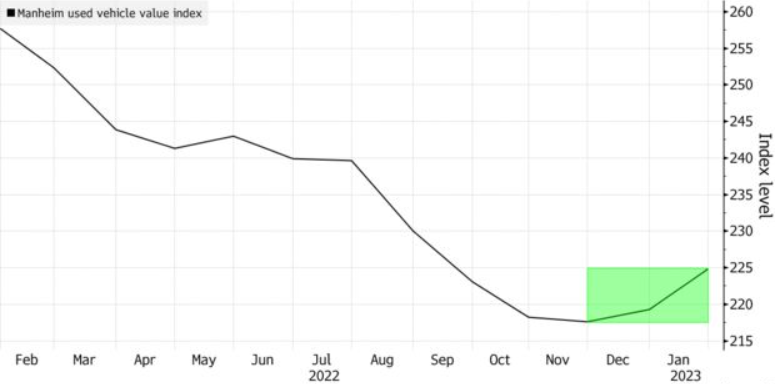Inflation Concerns Add Challenges to the Used Car Market (PDF)
Even as the Federal Reserve raises interest rates, a surprise spike in used-vehicle prices last month is fueling frustration among US car buyers.
As a result of the 2.5% rise in used vehicle prices from December, Manheim said some of last year’s 15% decline had been reversed. In the past, consumers believed automakers and dealers would start discounting vehicles that have never been so expensive based on the prices at auctions that were tracked by the company.
The used-vehicle value index at Manheim was down 12.8% in January from a year ago, but it has now trended back up sequentially in each of the last two months. Prices for used cars are high both at auctions and in retail showrooms. Inflation may need more action if the jobs report is strong.

Each percentage point increase in used-car prices results in a five-basis point rise in the overall inflation rate. Pre-owned cars make up 4.5% of the Consumer Price Index.
Central bank officials are worried that a tight labor market will keep wages and inflation rising as the pullback in inflation has largely been driven by goods, leading them to shift their focus to the service sector. As measured by the CPI, used car prices have declined in recent months, which has aided the Fed in combating inflation.
Now, with an increase in prices, Hertz Global Holdings Inc. CEO Stephen Scherr has noted that the company has experienced a significant surge over the past five weeks in both auction and retail prices for its vehicle fleet. Carvana Co. and their own dedicated retail channel are responsible for selling a quarter of Hertz’s fleet and have managed to capture a premium of 5-7% above auction estimates, while the vehicles have all been sold at more than their book value.
During the last four weeks, there has been a noticeable uptick and stability. The rebound is partly due to consumers returning to the market after prices had slowed from peak levels. Manheim said used-vehicle sales rose 16% in January over December and 5% compared to a year ago. The result is that consumers will have to wait longer for a decent used car deal.


